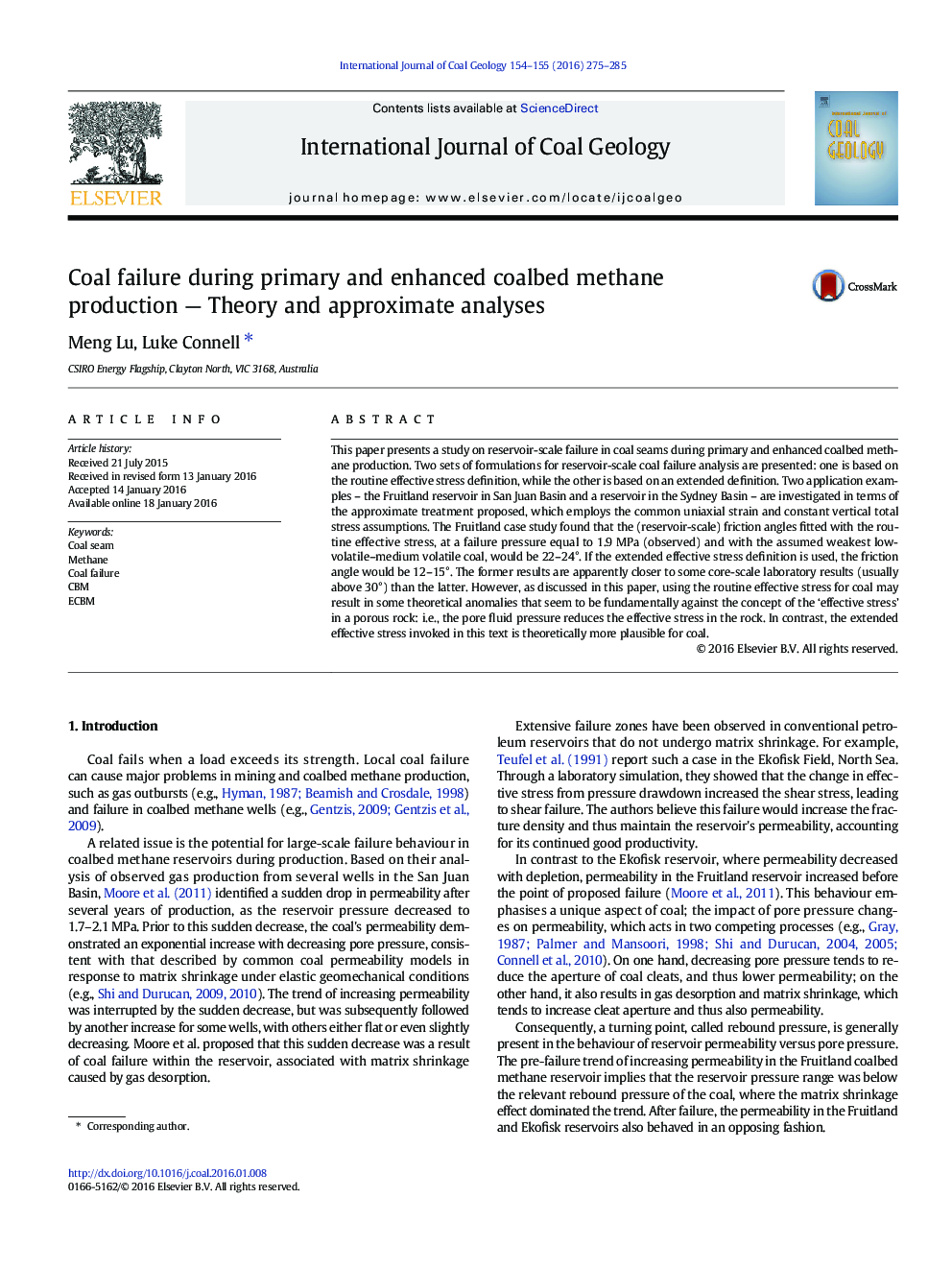| Article ID | Journal | Published Year | Pages | File Type |
|---|---|---|---|---|
| 1752872 | International Journal of Coal Geology | 2016 | 11 Pages |
•The mechanism for reservoir-scale coal failure during gas production is investigated.•The unsuitability of the routine effective stress definition for coal is discussed.•An extended effective stress formulation is proposed.•The pertinent failure envelops are analytically formulated.•Two field application examples are presented.
This paper presents a study on reservoir-scale failure in coal seams during primary and enhanced coalbed methane production. Two sets of formulations for reservoir-scale coal failure analysis are presented: one is based on the routine effective stress definition, while the other is based on an extended definition. Two application examples – the Fruitland reservoir in San Juan Basin and a reservoir in the Sydney Basin – are investigated in terms of the approximate treatment proposed, which employs the common uniaxial strain and constant vertical total stress assumptions. The Fruitland case study found that the (reservoir-scale) friction angles fitted with the routine effective stress, at a failure pressure equal to 1.9 MPa (observed) and with the assumed weakest low-volatile–medium volatile coal, would be 22–24°. If the extended effective stress definition is used, the friction angle would be 12–15°. The former results are apparently closer to some core-scale laboratory results (usually above 30°) than the latter. However, as discussed in this paper, using the routine effective stress for coal may result in some theoretical anomalies that seem to be fundamentally against the concept of the ‘effective stress’ in a porous rock: i.e., the pore fluid pressure reduces the effective stress in the rock. In contrast, the extended effective stress invoked in this text is theoretically more plausible for coal.
